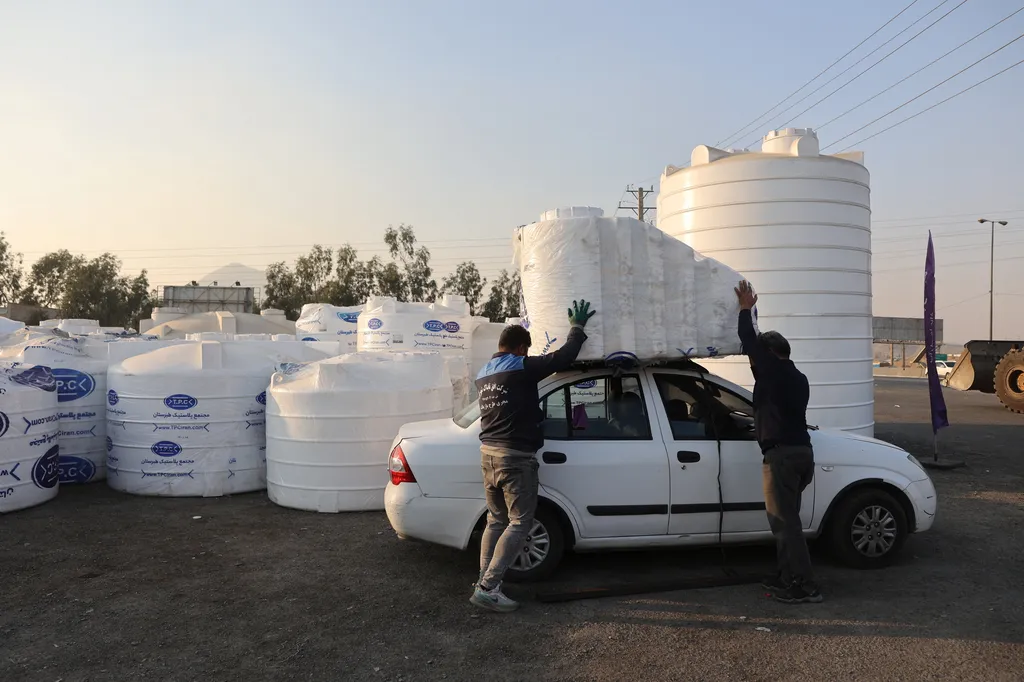Authorities in Iran are confronting an escalating water crisis, with Tehran at the epicenter. President Masoud Pezeshkian has issued a stark warning: if rain does not fall by next month, water rationing will be enforced, and the capital, home to 10 million, may even face evacuation. While experts view evacuation as an extreme measure unlikely to materialize, the president’s alert underscores the severity of the challenges Iran faces amid multiple crises and economic strain.
Iran is enduring its sixth consecutive year of drought, compounded by summer heatwaves that pushed temperatures above 50 degrees Celsius. The past water year was one of the driest on record, with precipitation plummeting by 81 percent compared to historical averages. Nineteen dams, up from nine just three weeks ago, are nearly dry, filled to less than 5 percent capacity. The five major dams supplying Tehran are at critically low levels, averaging around 10 percent capacity. A viral video from the Karaj reservoir starkly illustrated the crisis, showing a swimmer walking through the shallow waters.
The situation is dire, with limited options for relief. Farshid Vahedifard, a professor of civil and environmental engineering at Tufts University, warns that without substantial rain and snowfall, the human toll—both economic and social—will be severe. Water scarcity is already fueling local tensions and protests, which could escalate into broader social conflict as economic hardships mount.
Energy Minister Abbas Aliabadi has announced imminent water rationing, including potential nighttime shut-offs nationwide. Unannounced water cut-offs have already disrupted millions, particularly during the summer. Aliabadi attributed some of the strain to infrastructure damage from the recent 12-day war with Israel and urged citizens to purchase water storage tanks. However, household water consumption accounts for less than 8 percent of total use, with agriculture consuming the vast majority.
Criticism and despair have filled local newspapers. The moderate Etemad newspaper blamed “unqualified” managers for the crisis, while the reformist daily Shargh accused political interests of sacrificing the environment. Kaveh Madani, director of the UN University Institute for Water, Environment and Health, highlighted Iran’s “water bankruptcy” due to poor management, lack of foresight, and overreliance on technology. He noted that Tehran, a naturally dry region, has been artificially supplied with water, creating a false sense of abundance.
Madani emphasized that Iran’s water crisis is part of a broader resource depletion, including energy and natural gas. He cautioned that meaningful change requires long-term policies that may not yield immediate results, a challenge given the current political climate. The first time Supreme Leader Ayatollah Ali Khamenei publicly urged water conservation was nearly 15 years ago, yet the situation has worsened under successive governments.
Iran’s agricultural self-sufficiency policy, mandating 85 percent of domestic food production, is unsustainable given the country’s water and soil limitations. Morad Kaviani, a professor of geography and hydropolitics at Iran’s Kharazmi University, pointed out that nearly 30 percent of agricultural produce is wasted due to outdated practices and misguided crop selection. Over 90 percent of Iran’s water supply is devoted to agriculture, which contributes only about 12 percent of the GDP and 14 percent of employment.
Post-revolution governments, particularly through the Islamic Revolutionary Guard Corps, have constructed hundreds of dams and wells, often interfering with natural river flows. Groundwater reserves are being depleted at unsustainable rates, leading to land subsidence and ecosystem collapse in regions like Isfahan and Sistan and Baluchestan. Tehran and other cities rely on water transfers from distant aquifers via outdated infrastructure, further straining resources.
This crisis could reshape the water, sanitation, and drainage sector by accelerating the adoption of sustainable water management practices. It may also spur investment in modern irrigation technologies and infrastructure upgrades to reduce water waste. The situation could drive policy reforms aimed at balancing agricultural needs with water availability, potentially shifting focus toward more efficient and sustainable practices. Additionally, the crisis may highlight the need for regional cooperation in water resource management, particularly in shared river basins.

